The Silver Lining of the New Gilded Age: Fewer Targets
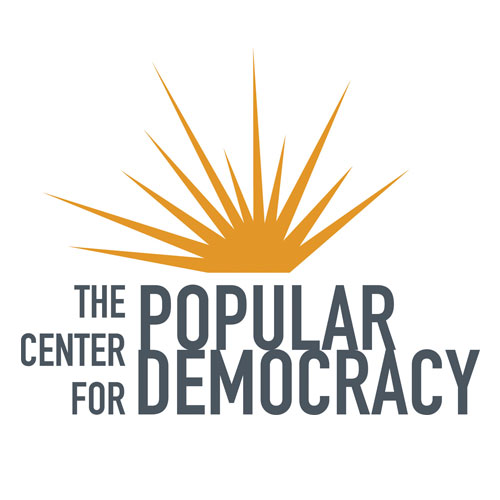
The Silver Lining of the New Gilded Age: Fewer Targets
Members of groups including Hedge Clippers and the Center for Popular Democracy protest outside Blackstone's New York...
Members of groups including Hedge Clippers and the Center for Popular Democracy protest outside Blackstone's New York headquarters in January.
Read the full article here.
How Walmart Persuades Its Workers Not to Unionize
One former Walmart store manager tells the story that after discovering a pro-union flyer in his store’s men’s room,...
One former Walmart store manager tells the story that after discovering a pro-union flyer in his store’s men’s room, he informed company headquarters and within 24 hours, an anti-union SWAT team flew to his store in a corporate jet. And when the meat department of a Walmart store in Texas became the retailer’s only operation in the United States to unionize, back in 2000, Walmart announced plans two weeks later to use prepackaged meat and eliminate butchers at that store and 179 others.
With 1.3 million U.S. employees—more than the population of Vermont and Wyoming combined—Walmart is by far the nation’s largest private-sector employer. It’s also one of the nation’s most aggressive anti-union companies, with a long history of trying to squelch unionization efforts. “People are scared to vote for a union because they’re scared their store will be closed,” said Barbara Gertz, an overnight Walmart stocker in Denver.
Walmart maintains a steady drumbeat of anti-union information at its more than 4,000 U.S. stores, requiring new hires—there are hundreds of thousands each year—to watch a video that derides organized labor. Indeed, Walmart’s anti-union campaign goes back decades: There was “Labor Relations and You at the Wal-Mart Distribution Center,” a 1991 guide aimed at beating back the Teamsters at its warehouses, and then in 1997 came “A Manager’s Toolbox to Remaining Union Free.” The first half of a statement in that toolbox has been repeatedly snickered at for being so egregiously false: “We are not anti-union; we are pro-associate.”
Early last year, Anonymous, a network of hacker activists, leaked two internal Walmart PowerPoint slideshows. One was a “Labor Relations Training” presentation for store managers that echoed the “Manager’s Toolbox” in suggesting that unions were money-grubbing outfits caring little about workers’ welfare. “Unions are a business, not a club or social organization—they want associates’ money,” the PowerPoint read. (Walmart confirmed the PowerPoints’ authenticity.) “Unions spend members’ dues money on things other than representing them,” it added.
Walmart is perfectly within its rights to communicate its stance to employees. While employers are legally barred from threatening store closures, layoffs, or loss of benefits because of unionization, they are free to tell workers why they oppose unions.
Walmart has battled for years against the United Food and Commercial Workers Union, which represents employees at many grocery stores and retailers, and its offshoot, OUR Walmart, an association of Walmart employees. Walmart insists that the UFCW is out to damage Walmart’s business. The second PowerPoint that Anonymous leaked last year attacked OUR Walmart, asking, “Is OUR Walmart/UFCW here to help you? Answer: NO.”
Tensions have risen between the retailer and OUR Walmart in recent years, with the labor group organizing nationwide protests outside hundreds of stores each Black Friday. The National Labor Relations Board issued a complaint in January of last year, accusing Walmart of illegally firing 19 OUR Walmart members and illegally disciplining more than 40 others after strikes and protests demanding higher pay. Walmart maintains that the firings and disciplining were legal and not in retaliation for protesting.
Getting a glimpse of Walmart’s internal PowerPoints and training manuals is rare, but one of Walmart’s orientation videos was leaked recently, and it again revealed Walmart’s anti-union efforts. Labor experts and Walmart employees say they were surprised at the blatant untruths in many of the video’s pro-company and anti-union statements.
Walmart confirmed the video’s authenticity and said the company showed it to new hires from 2009 through last year. Early on in the course of the video’s nine minutes, an actor dressed as a Walmart employee says, “You’re just beginning your career with us. It’s hard to grasp everything that’s available to you, like great benefits.”
Ken Jacobs, the chairman of the University of California, Berkeley’s Labor Center, suggested that this was essentially propaganda. “Walmart's benefits are well below the standard for union groceries,” he said. “They are not ‘great benefits’ by any standard.” A discounter like Walmart certainly doesn’t have the generous pensions or Cadillac health plans offered by some companies. Gertz, the overnight stocker in Denver, says her health plan is so stingy that she often doesn’t see a doctor when she’s sick because the deductible requires her to pay the first few thousand dollars out of pocket. Gertz said that when workers call in sick, their first day off comes out of their vacation days or personal days, not their paid sick days.
A spokesperson for Walmart says it will soon revamp its policy so that employees can use paid sick days starting on their first day out. The spokesperson added that its bonuses, 401(k) plan, and health plan are considerably better than at most other discounters—its 401(k) plan gives a dollar-for-dollar match for the first six percent of pay and the premium for its most popular health plan is just $21.90 every two weeks. That said, part-time workers, who represent nearly half its work force, don’t qualify for many of these benefits.
The leaked video also boasts, “There’s no retail company that offers more advancement and job security than Walmart.” Considering that some retailers are unionized with strong job-security provisions in their union contracts, some labor advocates wondered how Walmart could begin to assert that its job security is as strong as any other retailer’s.
“That’s patently false,” said Stuart Appelbaum, the president of the Retail, Wholesale and Department Store Union, a division of the UFCW. “At Walmart you can be fired for any reason at all or no reason.” He contrasted Walmart, one of the nation’s many “at-will” employers, with retailers that are unionized or partly unionized, including Costco, Macy’s, H&M and Modell’s. At unionized stores, workers can only be fired “for cause,” meaning managers need a strong reason to fire someone—for example, stealing from a store or arriving 30 minutes late five days in a row. Moreover, workers in those unionized stores can usually challenge their dismissal by bringing in an impartial arbitrator who helps determine whether a firing was justified.
Walmart, in its orientation video, makes other attempts at belittling unions. It features an actor who says, “I was a union member at my last job. Everyone actually had to join the union . . . The thing I remember most about the union is that they took dues money out of my paycheck before I ever saw it, just like taxes.” The character’s assertion that he “had to join the union” diverges from the truth. The Supreme Court ruled in 1963 that workers cannot be required to join the union at a unionized workplace—although they can be required to pay union dues or fees (unless they live in one of the 25 states with “right to work” laws).
In the video, an actress standing in front of a rack of produce continues to hammer the message. “I always thought that unions were kind of like clubs or charities that were out to help workers,” she says. “Well, I found out that wasn’t exactly the case. The truth is unions are businesses, multimillion-dollar businesses that make their money by convincing people like you and me to give them a part of our paychecks.”
Although some union leaders have generous salaries, Benjamin Sachs, a labor law professor at Harvard, said that unions aren’t for-profit businesses. “If unions are businesses, they’re the best example of the sharing economy we’ve seen,” Sachs said. “Here’s the business model: By sharing their resources, including their financial resources, workers make better lives for themselves and their families.” Thomas Kochan, an MIT professor of management, said that the phrase the actor uses—“clubs and charities”—“insults any new hire’s intelligence.” “Most people know what unions are and what they try to do,” Kochan said.
Indeed, one might ask, if unions are doing as little for workers as Walmart maintains, why then does Walmart bother to battle unions so aggressively? Walmart takes a far more jaundiced view of unions than do many Americans—for instance the nation’s Roman Catholic bishops. “The Church fully supports the right of workers to form unions or other associations to secure their rights to fair wages and working conditions,” the bishops once wrote in a pastoral letter, Economic Justice for All. And Pope John Paul II, never known as a raging liberal, called unions, “an indispensable element of social life.”
Brian Nick, a Walmart spokesman, explained why the company made the video. “The core reason to have the training and information on video, in and of itself, is we know that third-party groups often reach out to our associates,” he said. “This is an opportunity for us to provide accurate information that gives our associates knowledge about their work environment and their own rights as associates.”
In boasting about Walmart, the video says, “Walmart jobs are flexible jobs, giving associates the opportunity to balance our personal life with our worklife.” But Carrie Gleason, director of the Fair Workweek Initiative at the Center for Popular Democracy, an advocacy group, strongly disagreed. “I’ve spoken with countless Walmart associates who talk about how erratic their work schedules are, about how managers regularly disregard their requests for basic accommodations so they can go to school or take care of their families,” she said. Some Walmart workers say their stores slashed their hours when they asked managers to accommodate their college schedule or their efforts to hold a second job to make ends meet.
Brian Nick, the Walmart spokesman, said the company was improving its scheduling practices. Beginning next year, it will offer some employees fixed schedules each week—many employees complain that their work schedules change vastly week-to-week.
In urging workers to shun unions, the Walmart video says, “In recent years, union organizers have spent a lot of time, effort and money trying to convince Walmart associates to join a union, all without any success.” But that’s not quite true. The UFCW hasn’t sought to persuade Walmart employees to join a union in recent years, although it did help form OUR Walmart to push for better wages and working conditions. OUR Walmart claimed a victory in February when Walmart announced it would raise its base pay to $9 this year and $10 next year. A spokesperson for Walmart said it was responding to a tighter labor market and boasted that the move would mean raises for 500,000 workers.
The Walmart video is correct about at least one thing: Most of the recent unionization votes at Walmart stores in the U.S. were unsuccessful. For example, the tire and lube workers at two Walmart stores, in Colorado and Pennsylvania, voted overwhelmingly in 2005 against unionizing. But the UFCW had a big success in 2004, when it unionized a Walmart in Jonquiere, Quebec—a first in North America. Walmart closed that store shortly afterward, and Canada’s Supreme Court ultimately ruled that the shutdown was an illegal ploy to avoid having a union. Walmart has long argued that it closed the Jonquiere store because it was unprofitable and that the closing had nothing to do with the union. As for Walmart’s decision to suddenly begin using prepackaged meat after that meat department in Texas unionized in 2000, the company said that the timing was just a coincidence and that the decision had nothing to do with unionization.
This past April, Walmart abruptly announced it was closing its store in Pico Rivera, California, along with four other stores, for six months. Many workers saw that as a daunting anti-union statement—the Pico Rivera store has the nation’s most militant OUR Walmart chapter, having staged a sit-in and numerous other protests. Walmart, however, insisted that the closing was necessitated by “ongoing plumbing issues.”
Source: The Atlantic
Toys 'R' Us and the Death of Retail
When Debbie Beard found out the company she'd worked at for 29 years, Toys R Us, was closing down, she was shocked--she...
When Debbie Beard found out the company she'd worked at for 29 years, Toys R Us, was closing down, she was shocked--she knew the company had been having financial difficulties for a while, but didn't realize it was that bad. The more she learned, though, about the way the company had been looted by private equity firms Bain Capital and KKR, the more she determined that no one else should have to go through this. Debbie and other Toys R Us workers are organizing to demand severance pay from the company, and beyond that, organizing to stop the kind of leveraged buyouts that saddle viable companies with unsustainable debt. She joins me along with Carrie Gleason of the Fair Workweek Initiative at the Center for Popular Democracy to explain what can be done.
Read the full article here.
The End of On-Call Scheduling?
Retailers have been ...
Retailers have been under intense pressure from labor groups, regulators, and their own employees to end on-call scheduling—the practice in which shift workers are called to work on short notice, and are often uncompensated if it turns out to be a slow day. On Friday, New York attorney-general Eric Schneiderman’s office announced that J.Crew will end on-call scheduling nationwide this month. The retailer joins Urban Outfitters, Abercrombie & Fitch, Bath & Body Works, Gap, and Victoria’s Secret, which all have announced changes since Schneiderman’s office launched an inquiry into the practice at over a dozen companies.
“After discussion with my office, J. Crew has agreed to end on-call shifts nationwide and to provide one week of advance notice about schedules to employees at all New York store locations,” said Schneiderman in a statement. “Workers deserve protections that allow them to have a reliable schedule in order to arrange for transportation to work, to accommodate child-care needs, and to budget their family finances.”
This is the sixth agreement Schneiderman has reached with a major retailer. In April, the New York attorney-general’s office sent letters to 13 retailers asking for information regarding their scheduling policies: “We have been informed that a number of companies in New York State utilize on-call shifts and require employees to report in some manner, whether by phone, text message, or email, before the designated shift in order to learn whether their services are ultimately needed on-site that day,” said the letter.
The letter expresses concern that the practice might be in violation of a state regulation that employees who report for work must be paid for at least four hours (or the number of hours in a regular shift) of work. It cites the financial and personal strains for workers without predictable schedules—from being unable to work another job or attend school, to the strains of finding childcare last minute. Further, a report by the Economic Policy Institute found that the lowest income workers face the most irregular work schedules.
A spokesperson for Gap Inc. confirmed that all five brands—The Gap, Banana Republic, Old Navy, Intermix, and Athleta—has phased out on-call scheduling globally by the end of September.* L Brand—the parent company for Victoria’s Secret and Bath & Body Works—also confirmed that they have ended the practice nationwide.
Gap is also working on a pilot project with Joan Williams, a professor and director of the Center for WorkLife Law at the University of California Hastings College of Law, and Susan Lambert, a professor at the University of Chicago who studies scheduling issues, on new ways to stabilize worker schedules. Lambert’s researchfound that 64 percent of food-service workers and half of retail workers receive less than a week’s notice for shifts.
For now, the shift away from on-call scheduling seems to be only gaining momentum: Earlier this week, Forever 21 was hit with a lawsuit from a former employee over unpaid on-call scheduling. And, for the seven remaining companies that Schneiderman’s office contacted (the identities of which are unknown), such momentum may soon be overpowering.
Source: The Atlantic
Tax reform stumbling block
Don’t look for a tax reform roll-out as soon as Congress comes back despite the aggressive timetable laid out by White...
Don’t look for a tax reform roll-out as soon as Congress comes back despite the aggressive timetable laid out by White House legislative director Marc Short. Part of the reason is that it probably won’t be ready yet. But it also has to wait until after the GOP congress passes a budget resolution, people close to the matter tell MM.
Because if Republicans lay out their tax reform plan beforehand, Democrats could use the budget vote-a-rama process in the Senate to try and attack individual pieces of the plan.
Read the full article here.
Debbie Lesko wins Arizona congressional race, leaves Republicans anxious about the fall

Debbie Lesko wins Arizona congressional race, leaves Republicans anxious about the fall
Ady Barkan, the California man with ALS who confronted Sen. Jeff Flake, R-Arizona, over health care issues last year,...
Ady Barkan, the California man with ALS who confronted Sen. Jeff Flake, R-Arizona, over health care issues last year, started an organization to oppose GOP health care policies and raised money for Tipirneni. "There is no such a thing as a safe Republican seat this year. Dr. Hiral Tipirneni overcame the odds to come within striking distance of victory in a deep red district, because the Republicans put their donors' greed ahead of the health of families like mine," Barkan said Tuesday.
Read the full article here.
Man with ALS confronts Flake on plane over tax bill vote
A progressive activist who identified himself as diagnosed with Lou Gehrig's Disease (ALS) confronted Sen. Jeff Flake (...
A progressive activist who identified himself as diagnosed with Lou Gehrig's Disease (ALS) confronted Sen. Jeff Flake (R-Ariz.) on an airplane this week over Flake's vote on the GOP tax-reform bill.
Activist Ady Barkan, a staffer at the Center for Popular Democracy, questioned Flake on Thursday after the Arizona Republican voted in favor of the GOP tax-reform bill that passed the Senate in a late-night session last week. Videos of the 11-minute conversation were posted on Twitter.
Read the full article here.
Elizabeth Warren, Workers Take Aim at ‘Walmart Economy’
RH Reality Check - November 19, 2014, by Emily Crockett - When Sen. Elizabeth Warren (D-MA) and Rep. George Miller (D-...
RH Reality Check - November 19, 2014, by Emily Crockett - When Sen. Elizabeth Warren (D-MA) and Rep. George Miller (D-CA) invited Walmart workers to brief Congress on Tuesday about the retail giant’s abusive practices, the conversation was about more than just Walmart.
“No one in this country should work full-time and still live in poverty,” Warren said.
“This is about the simple dignity of the people you have hired to work,” Miller said. “When you have a higher minimum wage, fair scheduling, and equal work for equal pay, the perception of the business goes up in the people’s mind, the customers go up and the revenues go up.”
Cantare Duvant, a Walmart customer service manager, said at the briefing that since Walmart is the nation’s largest retailer, it sets the standard for others in the industry. “So not only do we as Walmart workers deserve better, our economy also deserves better,” she said.
Duvant is a member of OUR Walmart (Organization United for Respect at Walmart), a union-backed group of Walmart workers who are, in Duvant’s words, “struggling to support our families on low pay and erratic scheduling” in what is now “Walmart’s low-wage economy.”
“Walmart specifically is worth discussing not only because of the 1.3 million workers it directly employs, but also because of the impact its employment practices have on the rest of our economy,” said Amy Traub, senior policy analyst at Demos. She said Walmart does this by “pushing down wages, limited workers hours, and squeezing its suppliers and its competitors.”
A majority of Americans are paid by the hour, and about half of early-career adults have no say in their work schedules, said Carrie Gleason, director of the Fair Workweek Initiative at the Center for Popular Democracy. “This isn’t just a narrow section of people,” she said.
Sen. Warren, a progressive hero who was recently appointed to a position in the Senate Democratic leadership, said that the issue of low-wage work in America is “deeply personal” for her.
When her father lost his job after having a heart attack, Warren said, her working-class family couldn’t pay the bills, lost their car, and almost lost their home. Then one day, “My mother, who was 50 years old and had never worked outside the home, pulled on her best dress, put on her lipstick, put on her high heels, and walked to Sears to get a minimum-wage job.”
“But here’s the key: It was a minimum-wage job in an America where a minimum-wage job would support a family of three.”
That could never happen today, Warren said, when “a momma and a baby on a full-time minimum-wage job cannot keep themselves out of poverty.”
Warren used the briefing to promote three pieces of legislation aimed at helping low-wage workers, including but not limited to people working at Walmart.
Those bills would raise the federal minimum wage to $10.10 per hour, give workers more reliable and flexible schedules, and help women address unequal pay based on gender.
Equal pay came up because women make up about two-thirds of the low-wage work force, and many are family breadwinners. Warren said that women in about half of American jobs can be fired just for asking whether their pay is unequal to their male coworkers.
The Schedules That Work Act, Warren said, is about the “basic fairness” of workers being able to plan for a second job, child care, or schooling. It would require employers to give workers their schedules two weeks in advance, compensate them for showing up for work only to be sent home, and not retaliate against workers for requesting more flexible or predictable schedules.
All three bills have been blocked by Republicans, which Warren openly acknowledged.
“I know that change is not easy. We might not pass these bills right away,” she said. “But don’t kid yourself about the importance of these bills, and the assurance that we’re eventually going to get them through.”
The Schedules That Work Act in particular would help Fatmata Jabbie, a Walmart worker and refugee from Saudi Arabia whose story was read at the hearing.
“Although I am not full-time yet, I am virtually on call seven days a week to pick up extra hours,” she said in her written statement. Her reward for that trouble is usually only 30 to 36 hours of work and $150 to $200 in take-home pay.
“I am a mom with two beautiful children, so I am not the only one who relies on that salary to survive,” Jabbie said.
OUR Walmart is pushing for bigger reforms than the three bills Warren promoted though. Members of the group are calling for their aggressively non-unionized employer to pay a minimum living wage of $15 an hour, provide stable, full-time schedules, and stop retaliating against workers who speak out against the company’s practices.
Duvant, for instance, already makes the $10.10 per hour that the federal minimum wage bill would guarantee—but that doesn’t do her much good, she said, when Walmart will only schedule her for 16 hours of work per week.
And Evelin Cruz, who worked for Walmart for 11 years, said at the hearing that the company fired her a few weeks ago for her activism with OUR Walmart.
“We spoke out for change, and Walmart did what it does best, which is bully, retaliate, and fire me,” she said.
Cruz told RH Reality Check that even though she no longer works at Walmart and is looking for other work, she’ll keep up the fight with OUR Walmart.
“That’s what they count on, for people to be out of Walmart and no longer want to participate,” she said. “But this is an issue that is not only affecting people in Walmart. It’s a widespread problem of scheduling, lack of hours, and a minimum wage that you can’t survive on.”
Source
Blacks Nearly Four Times More Likely Than Whites to Be Unemployed in Minnesota
Minneapolis City Pages - March 6, 2015, by Ben Johnson - A new study reaffirms a refrain equality advocates have become...
Minneapolis City Pages - March 6, 2015, by Ben Johnson - A new study reaffirms a refrain equality advocates have become quite fond of in this state: Minnesota is a great place to live -- for white people.
The Center for Popular Democracy and the Economic Policy Institute released a study yesterday showing the statewide unemployment rate for black people is 11.7 percent, compared to 3.2 percent for white people.
Black Minnesotans' unemployment rate is 3.7 times higher than white Minnesotans'. The study analyzed all 50 states and the District of Columbia, and the only places with a larger gap were Wisconsin (4.6 times higher) and D.C. (5.6 times higher).
Minneapolis unemployment rates are lower than statewide, but the racial gap (3.9x) is even higher.
When these figures came out yesterday protesters from across the country lobbied the Federal Reserve to keep its interest rates low.
When interest rates are low it's easier for businesses to borrow money, and in theory, easier access to money means businesses can hire -- and pay -- more people. On the flip side, if interest rates are kept too low for too long inflation becomes a concern.
"Unemployment is slowly, slowly heading in the right direction, but raising interest rates at this point would really set minorities back," said Becky Dernbach with Neighborhoods Organizing for Change, which held a rally yesterday at its headquarters. "We think the Fed needs to pay special consideration to how the recovery has not hit certain communities at all."
NOC and its allies are supportive of Minneapolis Fed President Narayana Kocherlakota, who favors keeping interest rates low, but he's stepping down in a year. Protesters made it clear yesterday they want a say in who takes his place.
"On a fundamental level, we need to have a voice in the process," said Dernbach.
Source
Warren allies demand answers from Clinton on Wall St. ties
“On behalf of our nine million supporters across the country, we are writing to request more information about your...
“On behalf of our nine million supporters across the country, we are writing to request more information about your positions regarding the revolving door between Wall Street and the federal government,” reads a statement backed by Democracy For America, Rootstrikers, CREDO Action, MoveOn.Org Political Action, the Center for Popular Democracy Action, The Other 98%, Friends of the Earth Action, and American Family Voices.
The missive, which comes as Clinton interrupts her Hamptons vacation to unveil her rural policy platform in Iowa on Wednesday, specifically notes that Clinton has yet to support or comment on Sen. Tammy Baldwin’s Financial Services Conflict of Interest Act. Progressive icon Sen. Elizabeth Warren — who has ties to many of those who signed the letter — has encouraged all presidential candidates to back the legislation, as both Bernie Sanders and Martin O’Malley have done.
“These types of ‘golden parachute’ compensation packages are highly controversial, and for good reason,” the letter reads. “At worst, it results in undue and inappropriate corporate influence at the highest levels of government — in essence, a barely legal, backdoor form of bribery.”
The letter concludes by posing two questions to the Democratic front-runner: “Do you still support the use of this controversial compensation practice?” and “If you become president, will you allow officials who enter your administration to receive this sort of bonus?”
While Clinton has made steps to appeal to the types of progressive voters behind this letter, she has so far resisted pressure from the left to support reviving the Glass-Steagall Act, which separated commercial and investment banking before it was repealed in 1999. And members of these groups who wanted bank antagonist Warren to run for the presidency are on high alert this week after news broke that the Massachusetts senator met with Vice President Joe Biden over the weekend as he considers his own presidential ambitions.
“It’s hard to imagine Democrats’ 2016 nominee will be truly tough on Wall Street banks that break the law, if they won’t commit to banning their advisers from receiving legalized bribes from those same banks,” said Charles Chamberlain, executive director of Democracy for America, a group founded by former Vermont governor and current Clinton backer Howard Dean.
The letter names a pair of Clinton associates who moved from banks to the State Department: Robert Hormats, an undersecretary who came from Goldman Sachs, and Thomas Nides, a deputy secretary who came from Morgan Stanley.
Warren has suggested repeatedly that any candidate seeking her endorsement must agree not to appoint officials with Wall Street ties.
“Anyone who wants to be president should appoint only people who have already demonstrated they are independent, who have already demonstrated that they can hold giant banks accountable, who have already demonstrated that they embrace the kind of ambitious economic policies that we need to rebuild opportunity and a strong middle class in this country,” she said in July.
Source: Politico





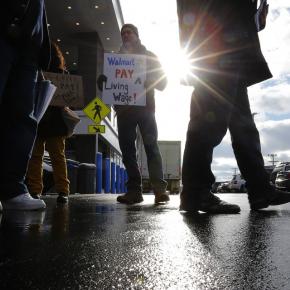
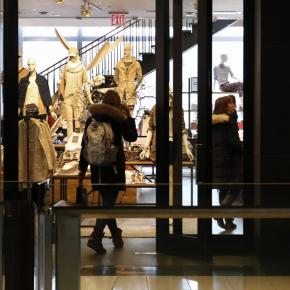

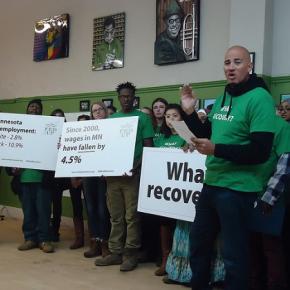
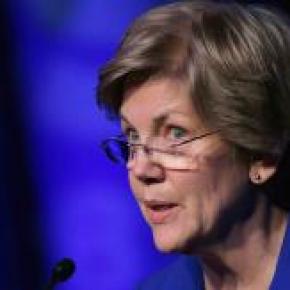


1 month ago
1 month ago